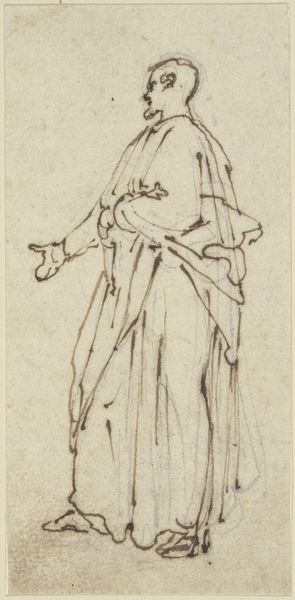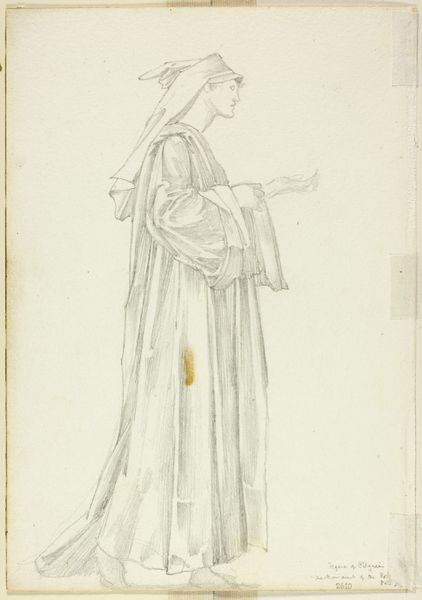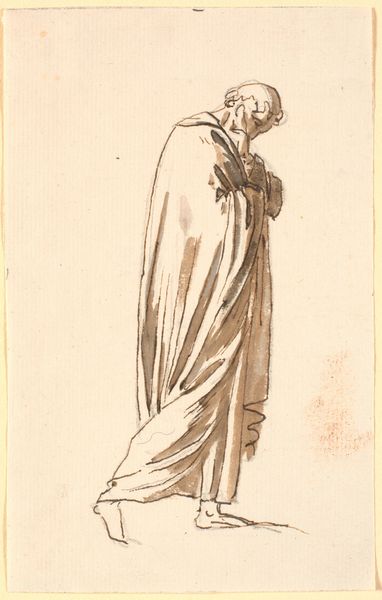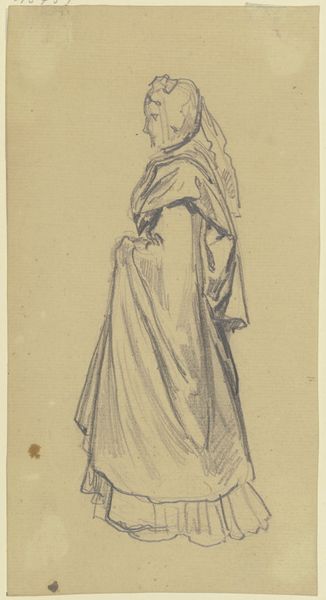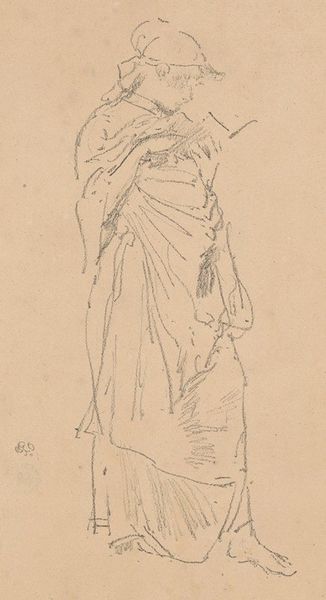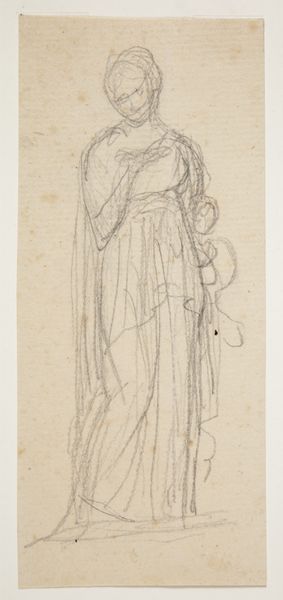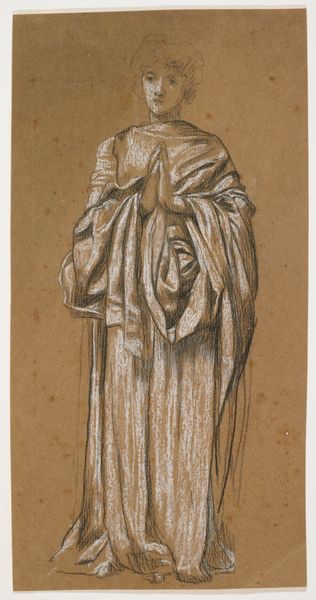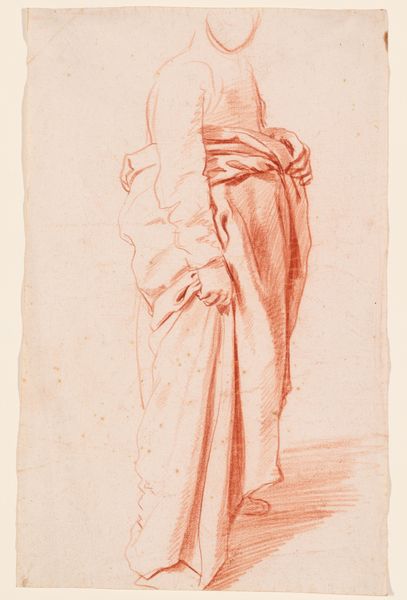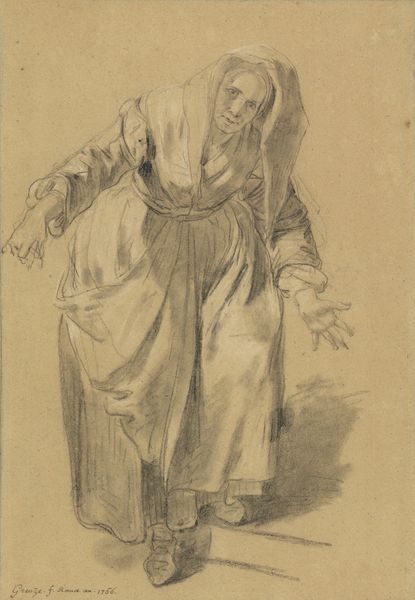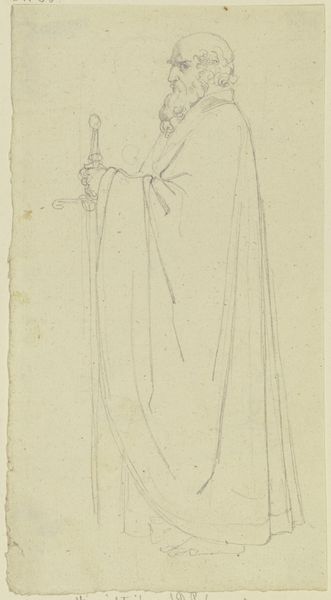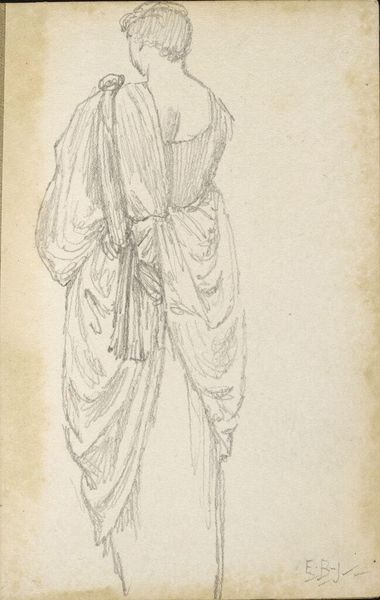
drawing
#
drawing
#
imaginative character sketch
#
toned paper
#
light pencil work
#
quirky sketch
#
pencil sketch
#
personal sketchbook
#
ink drawing experimentation
#
pen-ink sketch
#
sketchbook drawing
#
sketchbook art
Dimensions: overall: 18.6 x 11.5 cm (7 5/16 x 4 1/2 in.)
Copyright: National Gallery of Art: CC0 1.0
Curator: This intriguing sketch, attributed to Augustin Pajou and created between 1752 and 1756, is titled "The Borghese Cybele". Editor: My initial impression is one of restraint; it’s a controlled explosion of line work that defines the figure and space, almost reverentially capturing the contours and drapery with a surprising degree of sensitivity for a preliminary sketch. Curator: Pajou’s formal language adheres closely to Neoclassical principles here; consider the meticulous use of line and the figure's contrapposto pose which embodies this aesthetic preference for rationalism and order. The strategic tonal variations create a captivating sense of volume. Editor: It’s tempting to view this Cybele in relation to its contemporary social and political dynamics; one could easily examine the re-emergence of classical aesthetics as a statement about power, about situating oneself within a grand tradition in a time of tumultuous societal transformation. Curator: While social narratives may intertwine with the artist's purpose, it's the internal compositional elements—the linear quality, balanced weight, and spatial awareness—that underscore Pajou’s adept manipulation of form. He's defining visual relationships here; how does line intersect and interact? How does tone suggest depth and structure? Editor: Indeed, though understanding these forms and artistic choices is critical, so too is investigating why Cybele, the Phrygian mother goddess, appears in Villa Borghese at this moment; how might her depiction function as an element of self-fashioning, and how would it have resonated within an 18th-century framework of imperialism and nation-building? Curator: Viewing it through the lens of form over content, the image holds such energy due to its graphic structure: note the confident pen strokes against the paper's ground. What Pajou accomplishes is pure aesthetic harmony. Editor: And yet, form without context renders art as a sort of exercise. It's through that historical situating that artworks participate within social discourse, creating new meanings that enrich our comprehension. It reveals layers of history which bring this image to life!
Comments
No comments
Be the first to comment and join the conversation on the ultimate creative platform.
